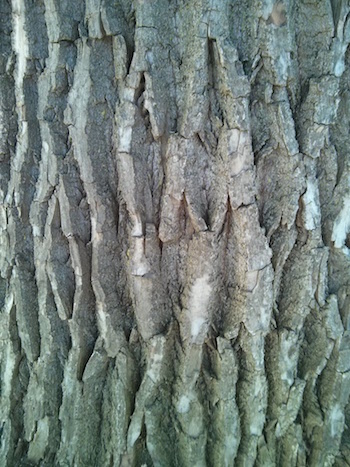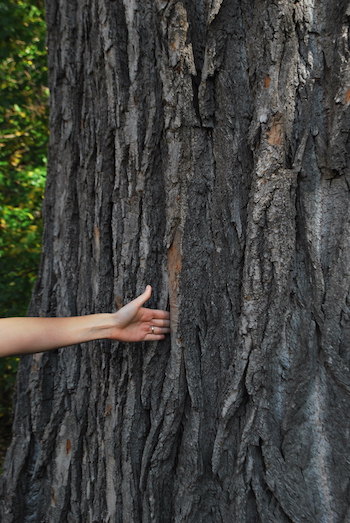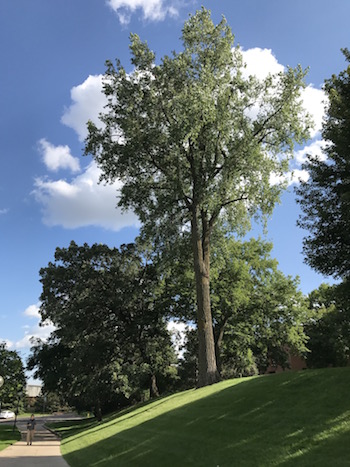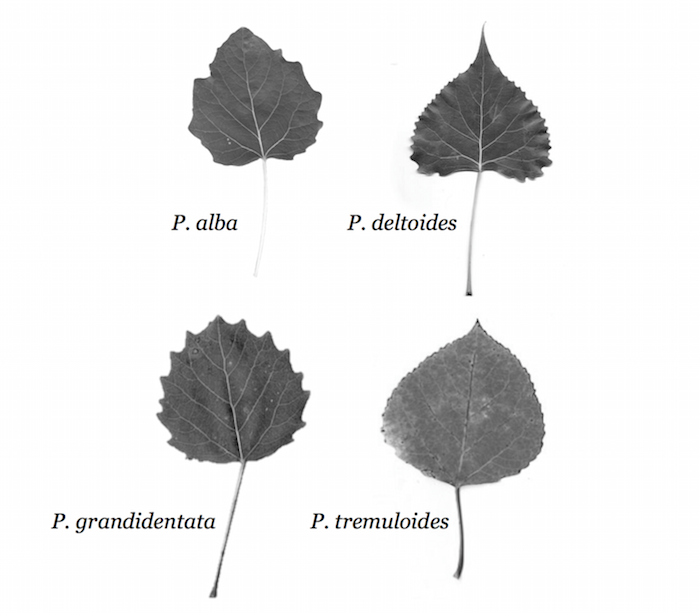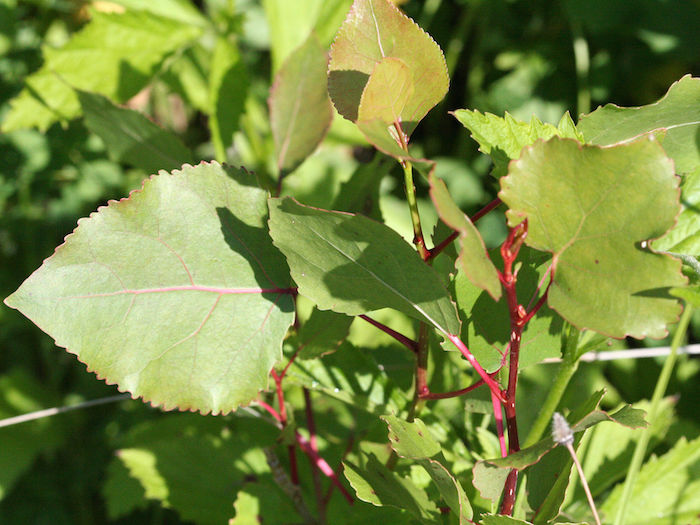
Description:
Eastern Cottonwood is a large, fast growing species native to North America. Leaves are simple, opposite, large, and oval (almost heartshaped). They are dark green above and a much paler green below. Eastern cottonwoods are dioecious, meaning trees are either male or female. Flowers are unremarkable; both are long catkins. Female flowers develop into seedpods that crack open in early summer, revealing seeds attached to silky, feathery strands that resemble cotton. These seeds are distributed by wind. Cottonwood bark is deeply grooved and ridged.
Eastern cottonwood is not a particularly useful lumber tree, but is popular as a shade tree due to its fast growth. It is also a popular species for restoration projects in riparian zones because the trees thrive with a lot of water. Some find them to be a nuisance due to the prodigious seed production—the cotton can become so dense that it can block air conditioners or other vents. Male trees are therefore most often used in urban environments.
Eastern cottonwood was one of several species included in a recent study of plant litter decomposition from the University of Minnesota’s Department of Ecology, Evolution, and Behavior.
Issues:
Eastern cottonwood is susceptible to several wood-boring insects and leaf-feeding insects. There is also a wide range of fungal diseases that can attack Eastern cottonwood. See below for more information.
Other Resources:
Riggs et al. Litter Decomposition paper
Photo Credit: R. A. Nonenmacher CC by SA 4.0
